|
za aprel' 2004 goda.
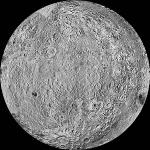 Amazing Farside View
Amazing Farside View
10.04.2004 | Lunnoe foto dnya
One of the joys of LPOD is receiving unsolicited lunar surprises. The wonderful mosaic of the lunar nearside prompted geographer Phil Stooke to send this matching mosaic of the entire farside! Phil assembled this farside mosaic from the Lunar Orbiter images as part of a forthcoming atlas of lunar exploration.
 Copernicus on the Limb
Copernicus on the Limb
9.04.2004 | Lunnoe foto dnya
Ya seen one crater, ya seen em all. Sometimes that's the way it feels. Because the energy involved in impact crater formation is so immense, craters of similar size and freshness look pretty much alike. For example, consider these two behemoths.
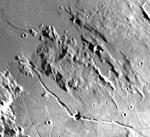 Sneaky Schneckenberg
Sneaky Schneckenberg
8.04.2004 | Lunnoe foto dnya
Schneckenberg is German for Snail Mountain, and if you look closely at the strange spiral-like feature at the center of this image you can see how well the name fits. Schneckenberg is nomenclaturally confusing, as well as topographically bizarre. The selenographer J. N.
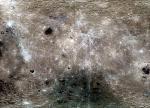 Colorful Privolva
Colorful Privolva
7.04.2004 | Lunnoe foto dnya
This alien landscape is not one of the satellites of Jupiter - it is the out of sight, totally out of mind farside of our own Moon. Kepler wrote a science fiction story, Somnium or Dream, about a trip to the Moon. He called the farside Privolva, which meant "Out of Sight of Earth".
 Fractured Frac
Fractured Frac
6.04.2004 | Lunnoe foto dnya
This is another one of the increasingly common amateur images that shows more than a Lunar Orbiter IV photo. John Sussenbach's great webcam image of Fracastorius seems to have about the same resolution...
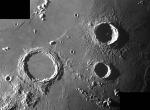 Three Cheers for Three As!
Three Cheers for Three As!
5.04.2004 | Lunnoe foto dnya
64 lunar craters have names than begin with the letter A. Three of them are shown here: Archimedes (diameter = 83 km; depth = 2.1 km), Autolycus (39 km; 3.4 km) and Aristillus (55 km; 3.6 km). The latter two craters are similar in morphology and in age.
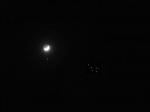 Conjunctions Galore!
Conjunctions Galore!
4.04.2004 | Lunnoe foto dnya
Do you ever just go out and enjoy the sky? During the last few nights of March there was a lot to enjoy after sunset. Each night the Moon moved up from planet to planet.
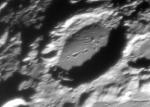 Mercy, Mersenius!
Mercy, Mersenius!
3.04.2004 | Lunnoe foto dnya
Mersenius is in the second rank of lunar craters. Not a must-see like Copernicus, Plato or Gassendi, but a good crater with more interesting features than are obvious. Mersenius is 84 km wide and about 2.3 km deep.
 Interplanetary Comparisons - Mercury Photo of the Day
Interplanetary Comparisons - Mercury Photo of the Day
2.04.2004 | Lunnoe foto dnya
I tricked you - or tried to. Yesterday's April 1st LPOD wasn't really of unidentified craters on the Moon, but was of the planet Mercury, taken by the Mariner 10 spacecraft during flybys...
 What Part of the Moon is This?
What Part of the Moon is This?
1.04.2004 | Lunnoe foto dnya
Recently, some photographs were recovered that had been misplaced since the 1970s. Unfortunately, the labels identifying the spacecraft and areas imaged are no longer attached to them. The pictures show craters and smooth plains that are hard to identify, suggesting that the area has otherwise been poorly imaged.

